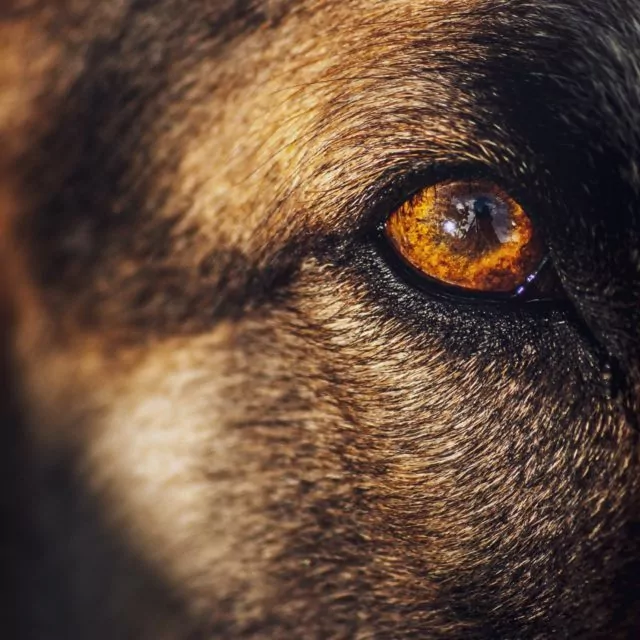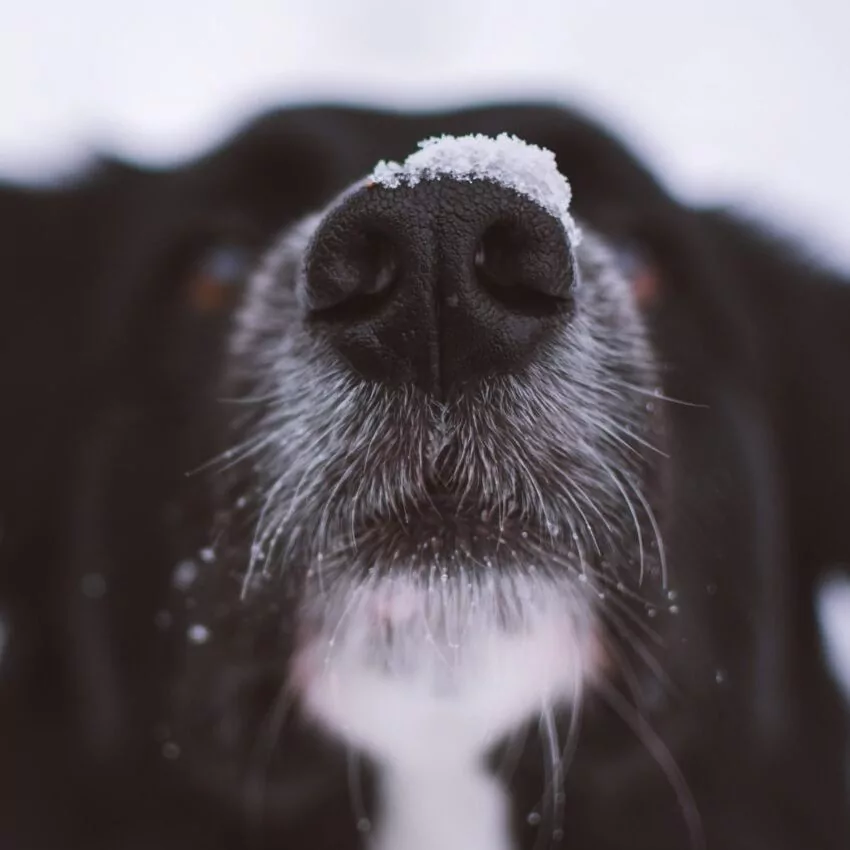Behavior & Symptoms
Why Is My Dog Shaking?

What’s causing your dog to shake, be rattled, and maybe even drool? Is your dog trying to channel his inner Elvis Presley?
Maybe. Maybe not. Body shakes in dogs occur for a wide gamut of medical, behavioral, and even genetic reasons. Some are easy to identify, such as shivering due being outside when the weather is brrrr cold. Some are happy actions, such as the full-body wiggle your dog may give you when you enter the front door. But others can be downright confounding, such as twitching while sleeping, or even life-threatening, such as uncontrollable trembling after ingesting a marijuana-laced brownie.
Whatever the type, no doggy shake should be ignored or dismissed without investigation. Take on the role of pet detective and report all clues you see, hear, and smell to your veterinarian if the shake is prolonged or your dog exhibits some health warning signs, such as pale gums, choking or stumbling.
“Certainly, dogs who are excited and are getting frustrated because they cannot get to whatever they desire, be it a person or chasing a squirrel, might start to tremble,” says Lisa Radosta, DVM, DACVB, a board-certified veterinary behaviorist for VetScoop who owns Florida Veterinary Behavior Service in West Palm Beach, Florida. She also serves on the Fear Free Executive Committee and is a co-author of the book From Fearful to Fear Free. “If the trembling lasts for longer than 30 minutes and the dog can not be distracted or will not eat, you need to call your veterinarian immediately.”
Genetic Causes of the Shakes
Shaking or trembling can have a number of causes. First, let’s look at the born-with-the-shakes type. Shaker Dog Syndrome is a neurologic disorder that causes some dogs to have head and body tremors. It is also called Generalized Tremor Syndrome (GTS).
“This disorder often happens in small white dogs, such as the Maltese, Westie (White Highland White terrier), and Poodles,” says Radosta. “No one knows what causes this.”
Signs typically don’t surface until the dog is at least nine months old. Initially, the shakes may be mistakenly attributed to a dog being anxious or having hypothermia (low-body temperature), but once a veterinarian confirms Shaker Dog Syndrome, your dog may need corticosteroids to tame the inflammation in the central nervous system and reduce flareups.
Cerebellar hypoplasia is a mouthful of a term for a disorder that starts in the head. The cerebellum is the part of the brain responsible for muscle movement and body coordination. Pups born with this condition do not have fully developed cerebellums. As a result, these pups stagger when trying to walk. Their legs tremble and their heads may bob. Again, for unknown reasons, certain breeds, including Airedales, Boston Terriers, Bull Terriers, and Chow Chows, are prone to be genetically predisposed to this condition. But experts say any dog of any breed or mix can be born with cerebellar hypoplasia.
Finally, some good old dogs well into their senior years may develop body shakes and leg tremors due to arthritis, weak muscles, and a worn-out immune system.
Medical Causes of the Shakes
Sadly, dogs do not live in protective bubbles and are not invincible. Like us, they can be injured from dog bites, collisions with cars or other causes.
“Dogs will shake in pain due to an injury, severe infection, or swelling,” Radosta says. “Some dogs will also whine or whimper while others will be quiet with the only visible pain sign showing up with their body shaking.”
Certain diseases, such as distemper, kidney failure, Addison’s disease, and low blood sugar (hypoglycemia) can trigger uncontrollable trembles in dogs.
So can seizures, which can be due to a genetic predisposition, a traumatic injury, or exposure to toxins, such as a venomous snakebite, ingestion of human pain medication, or yes, eating that marijuana-laced brownie you absentmindedly left on the kitchen counter.
The degree of the shakes depends on the overall health of the dog, the age, the type and amount of the toxin, and more.
Witnessing your dog having a seizure can be traumatic. He collapses into unconsciousness as his body jerks, stiffens, and twitches erratically. He may foam at the mouth and make a chomping sound, stiffen, and tremble heavily. He will not respond to his name being called.
During a seizure, the body’s core temperature may elevate dangerously above the normal range of 99.5 to 102.5 degrees Fahrenheit.
If you see a seizure start, say the time out loud at the beginning and when it ends so you can report the time it lasted to your veterinarian. Do not attempt to hold your dog down; that puts you at risk of a bite. Instead, place sofa cushions or pillows around your dog so he doesn’t hit his head against heavy furniture. Lower the blinds and dim the lights as well.
Call your vet right away. As an added safety measure, post the phone number of the ASPCA Animal Poison Control – 888-426-4435 – prominently on your refrigerator door and save it to your cell phone. This center is staffed 24/7 by board-certified veterinary toxicologists ready to help you help your dog.
Depending on your dog’s circumstances, your vet may treat seizures with phenobarbital or potassium bromide.
Behavioral Causes of the Shakes
Dogs may not know about winning a lottery, but some things may cause them such joy and delight that they can’t control their bodies from wiggling like Jell-O. You’ve seen footage of the reunion between a soldier and his faithful dog or a lost dog who is rescued and body shakes his way into the arms of his pet parent. It melts your heart, right?
It just validates that the human-animal bond is strong. This type of joyous body shaking puts the capital E in excitement.
Let’s now recognize that dogs can shake even without knowing that they are. That’s because dogs, like us, experience dreams. They go through three sleep stages: non-rapid eye movement, rapid-eye movement, and short-wave sleep. Animal researchers theorize that dogs dream during the REM stage, and act on their dreams by twitching or moving all four paws as if they were chasing a rabbit.
Do not panic when you see your sleeping dog start to twitch. If you’re concerned, you can gently call his name to wake him. Play it safe and do not touch him because some dogs awakened unexpectedly may be startled and react by biting.
Yes, some dogs have nightmares and wake up frightened and shaking. Speak calmly to reassure them when they wake.
However, some canine shakes are responses to less-wonderful emotions: fear, anxiety, and stress. Your dog may tremble at the sight, sound, or smell of a trigger, such as fireworks, a thunderstorm, the veterinary parking lot, a hair dryer, or other perceived threat. He may shiver and slink under the bed when family members get into a heated argument. Whatever the trigger, the canine brain kicks into action. Specifically, the part of the brain that processes emotions – known as the amygdala – unleashes the fight-or-flight hormones: cortisol and adrenaline.
A lot is happening in the body, too. The dog’s heart rate and breathing increase. His digestive system may feel like it has been punched, possibly triggering vomiting and diarrhea. He is not able to cope calmly and his immune system feels under attack. He may curl his lips, pant, shed heavily, have sweaty paws, whine, or show other signs.
Never underestimate or dismiss your dog’s displays of fear. Unchecked, they can develop into phobias, which are the extreme persistent and abnormal fear of something or someone.
Treatment ranges from behavioral modifications, such as providing your dog with a safe sanctuary like a bathroom or interior bedroom with classical music playing to muffle the sound of a looming thunderstorm or the jackhammers from nearby construction projects.
Exercise, such as vigorous walks, games of fetch, and food hunts throughout the house can unleash feel-good hormones like endorphins to help counter stress-causing shakes.
Some dogs respond well to over-the-counter calmers like green tea extract or Zylkene, a hydrolyzed milk protein. Others may need prescriptions, such as fluoxetine, trazodone, or gabapentin, to help tame feelings of fear and anxiety.
Don’t Forget Bath Time Shakes
Your dirty, stinky dog needs a bath before you will allow him in the house. Some people automatically reach for the garden hose and aim like a firefighter at their dog’s torso.
“Many of us bathe our dogs outside with the hose, but it can be cold water, for goodness sake!” Radosta says. “Those of us who live in warmer climates don’t usually see our dogs shaking because the water that comes out of the hose is quite warm. Check to make sure the water is a comfortable temperature for your dog before you bathe him.”
She adds, “If your dog is trembling and the water is warm, most likely your dog is afraid of something about that bath. Then you need to make the bath fun for your dog with treats or potentially seek professional help.”
Dogs also do full-body shakes to rid their coats of excess water droplets when being bathed in walk-in shows or kitchen sinks. You know that shake is coming, so quickly drape a towel over him to prevent yourself from getting drenched. Once he is on stable footing on a non-skid mat, let him shake, shake, shake to his heart’s content.
Did you find this helpful? Share it!
Additional Information
Questions for your Vet
- Should I try to hug my dog when he is shaking after hearing a loud noise?
- What are the side effects of anti-anxiety meds for dogs?
- Are dogs really “chasing” something like a squirrel when they twitch while sleeping?
About VetScoop
Pets make our lives better. At VetScoop, we’re on a mission to return the favor by giving you access to trustworthy, science-based information so you can provide the best possible care for your pets.
Related Articles We Think You'd Like





